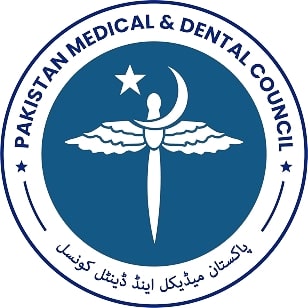FACTORS IMPACTING MYOCARDIAL INFARCTION IN YOUNG POPULATION; AN INSTITUTION BASED EXPERIENCE
DOI:
https://doi.org/10.59058/jaimc.v21i3.84Keywords:
Myocardial Infarction, young patients, factors.Abstract
ABSTRACT
Objective: To determine the frequency of contributing factors in Myocardial Infarction in young population
Study design: Descriptive, Cross-sectional study
Study was conducted over a period of six months in Medical Unit-II of Services Hospital, Lahore.
Materials & Methods: A total population of 149 young patients irrespective of their gender with age range from 15 to 45 years and suffering from myocardial infarction were included in this study. Relevant information comprising of presence or absence of Hypertension, Diabetes, Smoking, Dyslipidemia, Obesity, Hyperuricemia, and Family history of these selected cases were recorded in the data collection proforma and patients’ confidentiality was ensured.
Results: Out of 149 patients, 101 (67.79%) were males and 48 (32.21%) were females with male to female ratio of 2.1:1. Age range in this study was from 15 to 45 years with mean age of 34.68 ± 6.93 years. Majority of the patients; 80 (53.69%) were between 30 to 45 years of age. Hypertension was reported in 57 (38.26%), Diabetes Mellitus in 28 (18.79%), smoking in 61 (40.94%), dyslipidemia in 80 (53.69%), obesity in 20 (13.42%), hyperuricemia in 21 (14.09%) and positive family history was seen in 30 (20.13%) patients.
Conclusion: This study concluded that Hypertension, Diabetes, Smoking and Dyslipidemia constitute the common and most important contributing factors of Myocardial Infarction(MI) in young patients aged between 15 to 45 years.
Keywords: Myocardial Infarction, young patients, factors.
References
REFERENCES
Khan, Moien Ab et al. “Global Epidemiology of Ischemic Heart Disease: Results from the Global Burden of Disease Study.” Cureus vol. 12,7 e9349. 23 Jul. 2020, doi:10.7759/cureus.9349
Roth, G. A., et al. "Global Burden of Cardiovascular Diseases and Risk Factors, 1990-2019: Update From the GBD 2019 Study (vol 76, pg 2982, 2020)." JOURNAL OF THE AMERICAN COLLEGE OF CARDIOLOGY 77.15 (2021): 1958-1959.
Joshi P, Islam S, Pais P, Reddy S, Dorairaj P, Kazmi K et al. Risk Factors for Early Myocardial Infarction in South Asians Compared With Individuals in Other Countries. JAMA 2007;297(3):286-94
https://www.worldlifeexpectancy.com/pakistan-coronary-heart-disease
Kiani, Fatemeh et al. “Assessment of Risk Factors in Patients With Myocardial Infarction.” Global journal of health science vol. 8,1 255-62. 28 May. 2015, doi:10.5539/gjhs.v8n1p255Rathore
V, Singh N, Mahat RK, Kocak MZ, Fidan K, Ayazoglu TA, Aydin Karahan YG, Onk D, Akar E, Yolcu A. Risk factors for acute myocardial infarction: a review. EJMI. 2018 Jan;2(1):1-7.
Carrick D, Haig C, Maznyczka A, Carberry J, Mangion K, Ahmed N et al. Hypertension, Microvascular Pathology, and Prognosis After an Acute Myocardial Infarction. Hypertension. 2018;72(3):720-730
Flor, Luisa Sorio, and Monica Rodrigues Campos. "The prevalence of diabetes mellitus and its associated factors in the Brazilian adult population: evidence from a population-based survey." Revista Brasileira de epidemiologia 20 (2017): 16-29.
Mohanty L, Sahoo D, Meher D, Sahoo P. Prevalence of diabetes in patients with myocardial infarction: a study in a tertiary care centre. International Journal of Advances in Medicine. 2016;:842-846
Global Smoking Statistics Shows How Bad Tobacco Use Is for You [Internet]. Verywell Mind. 2019 [cited 19 May 2019]. Available from: https://www.verywellmind.com/global-smoking-statistics-for-2002-2824393
Sun J, Zhou W, Gu T, Zhu D, Bi Y. A retrospective study on association between obesity and cardiovascular risk diseases with aging in Chinese adults. Scientific Reports. 2018;8(1
Shah N, Kelly A, Cox N, Wong C, Soon K. Myocardial Infarction in the “Young”: Risk Factors, Presentation, Management and Prognosis. Heart, Lung and Circulation. 2016;25(10):955-960.
Dai, Haijiang, et al. "Global, regional, and national burden of ischaemic heart disease and its attributable risk factors, 1990–2017: results from the Global Burden of Disease Study 2017." European Heart Journal-Quality of Care and Clinical Outcomes 8.1 (2022): 50-60.
Lan M, Liu B, He Q. Evaluation of the association between hyperuricemia and coronary artery disease. Medicine. 2018;97(44):e12926
Rehman H, Samad Z, Mishra S, Merchant A, Narula J, Mishra S et al. Epidemiologic studies targeting primary cardiovascular disease prevention in South Asia. Indian Heart J 2018
ESC/ACC/AHA/WHF EXPERT CONSENSUS DOCUMENT Fourth Universal Definition of Myocardial Infarction (2018) Downloaded from http://ahajournals.org by on May 22, 2022
Kunkel, Katherine J et al. “2021 Update for the Diagnosis and Management of Acute Coronary Syndromes for the Perioperative Clinician.” Journal of cardiothoracic and vascular anesthesia, S1053-0770(21)00613-3. 22 Jul. 2021, doi:10.1053/j.jvca.2021.07.032
Palasubramaniam J, Wang X, Peter K. Myocardial infarction—From atherosclerosis to thrombosis: Uncovering new diagnostic and therapeutic approaches. Arteriosclerosis, Thrombosis, and Vascular Biology. 2019 Aug;39(8):e176-85.
Ioacara S, Popescu AC, Tenenbaum J, Dimulescu DR, Popescu MR, Sirbu A, Fica S. Acute myocardial infarction mortality rates and trends in Romania between 1994 and 2017. International Journal of Environmental Research and Public Health. 2020 Jan;17(1):285.
Wu WY, Berman AN, Biery D, Blankstein R. Recent trends in acute myocardial infarction among the young. Current opinion in cardiology. 2020 Sep;35(5):524.
Gao H, Wang Y, Shen A, Chen H, Li H. Acute Myocardial Infarction in Young Men Under 50 Years of Age: Clinical Characteristics, Treatment, and Long-Term Prognosis. International Journal of General Medicine. 2021;14:9321.
Yunyun W, Tong L, Yingwu L, Bojiang L, Yu W, Xiaomin H, Xin L, Wenjin P, Li J. Analysis of risk factors of ST-segment elevation myocardial infarction in young patients. BMC cardiovascular disorders. 2014 Dec;14(1):1-6.
Karim MA, Majumder AA, Islam KQ, Alam MB, Paul ML, Islam MS, Chowdhury KN, Islam SM. Risk factors and in-hospital outcome of acute ST segment elevation myocardial infarction in young Bangladeshi adults. BMC cardiovascular disorders. 2015 Dec;15(1):1-8.
Akram M, Zaidi F, Bansal S, Kishore K. A study of risk factors in young patients of myocardial infarction. International Journal of Research in Medical Sciences. 2015;2677-268.
Larsen GK, Seth M, Gurm HS. The ongoing importance of smoking as a powerful risk factor for ST-segment elevation myocardial infarction in young patients. JAMA Intern Med. 2013;173(13):1261-2.
Bachok N, Che’ Muda C. Association of Co-Morbidity and Treatment with the Complications of Acute Coronary Syndrome in Young Patients Less Than 45 Years. Malaysian Journal of Medical Sciences. 2018;25(1):42-52
Dugani SB, Hydoub YM, Ayala AP, Reka R, Nayfeh T, Ding JF, McCafferty SN, Alzuabi M, Farwati M, Murad MH, Alsheikh-Ali AA. Risk factors for premature myocardial infarction: a systematic review and meta-analysis of 77 studies. Mayo Clinic Proceedings: Innovations, Quality & Outcomes. 2021 Aug 1;5(4):783-94.
Ambroziak M, Niewczas-Wieprzowska K, Maicka A, Budaj A. Younger age of patients with myocardial infarction is associated with a higher number of relatives with a history of premature atheroscllerosis. BMC cardiovascular disorders. 2020 Dec;20(1):1-9.
Downloads
Published
How to Cite
Issue
Section
License
Copyright (c) 2023 Fatima, Athar Nayeem, Afia Sarwar, Atiya Begum

This work is licensed under a Creative Commons Attribution 4.0 International License.
The articles published in this journal come under creative commons licence Attribution 4.0 International (CC BY 4.0) which allows to copy and redistribute the material in any medium or format Adapt — remix, transform, and build upon the material for any purpose, even commercially under following terms.
-
Attribution — You must give appropriate credit, provide a link to the license, and indicate if changes were made. You may do so in any reasonable manner, but not in any way that suggests the licensor endorses you or your use.
- No additional restrictions — You may not apply legal terms or technological measures that legally restrict others from doing anything the license permits.
The editorial board of the Journal strives hard for the authenticity and accuracy of the material published in the Journal. However, findings and statements are views of the authors and do not necessarily represent views of the Editorial Board. Many software like (Google Maps, Google Earth, Biorender (free version)) restricts the free distribution of materials prepared using these softwares. Therefore, authors are strongly advised to check the license/copyright information of the software used to prepare maps/images. In case of publication of copyright material, the correction will be published in one of the subsequent issues of the Journal, and the authors will bear the printing cost.










